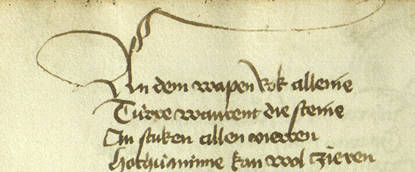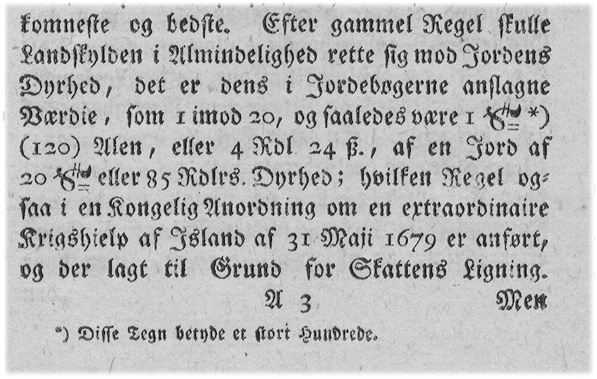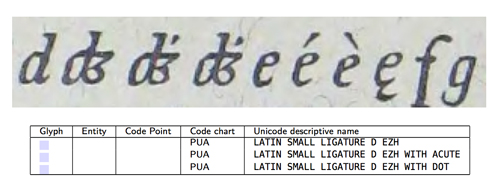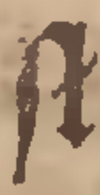|
Medieval Unicode Font Initiative |
|
Disclaimer: This site is managed by scholars in Medieval studies with the aim of establishing a consensus on the use of Unicode among medievalists. It is not affiliated with or endorsed by Unicode. |
Pipeline for v. 4.0 of the MUFI character recommendationAfter the publication of v. 3.0 of the MUFI character recommendation on 5 July 2009, a number of characters remain in the pipeline. They will be considered for inclusion in v. 4.0 of the MUFI recommendation.
1. From Karl Pentzlin, Schongau, Germany:
This character will be accepted by Unicode as DOUBLE HYPHEN. There is thus no need for a Private Use Area character. Background: The double straight hyphen is heavily used by the important German author Arno Schmidt (see e.g. http://de.wikipedia.org/wiki/Arno_Schmidt). As Arno Schmidt lived 1914-1979, the proposed character is not Medieval, but since other characters in MUFI also originate from more recent sources, the character would not a priori seem to be inappropriate. There is an example at http://www.acssoft.de/ArnoSchmidt1.jpg. This is a scan from Arno Schmidt, Abend mit Goldrand, p. 143 of the 1993 edition. The double hyphen can be found within the red circles, together with some single hyphens and (differently looking) equation signs on the same page, showing that the character is not a font variant of the latter two. At http://www.acssoft.de/ArnoSchmidt2.jpg (a scan of Dieter E. Zimmer, Sprache im Zeichen ihrer Unverbesserlichkeit, Hamburg 2005, p. 169), there is a quotation of a text from Arno Schmidt. Here, the double hyphen is misprinted as an equation sign, due to lack of a proper double hyphen type. Note, however, that the double hyphen is cited beside single hyphens within the same text part. This shows that the double hyphen is really needed not only when transcribing or quoting from the text of the author, but also when writing about his work e.g. in Germanistic texts. The proposed name has been chosen in contrast to the Unicode character U+2E17 DOUBLE OBLIQUE HYPHEN. Important update. In October 2011, Karl Pentzlin writes: The character called "DOUBLE STRAIGHT HYPHEN" by me was accepted in the meantime by ISO/IEC JTC1/SC2/WG2 and the UTC for addition into a future version of ISO/IEC 10646 and Unicode as "DOUBLE HYPHEN" (the provisional codepoint is U+2E40). This followed a decision that U+2E17 DOUBLE OBLIQUE HYPHEN will not get the annotation proposed in the cited Public Review Issue #169.
2. From Alexei Lavrentev, Lyon, France:
This character was postponed from v. 3.0. Further consideration is needed. Background: This character is called 'paraph' (Malcolm Parkes 1992, p. 43) or 'pied-de-mouche' (in French paleography). It is the ancestor of the pilcrow sign (Unicode 00B6) and a "brother" of 'paragraphus' (MUFI F1E1). Its shape is clearly different from these two, though (see illustrations), and I think it should have a codepoint of its own.
Fig. 2.1. Ms. Lyon, BM, 768 (15th century). Fig. 2.2. Ms. Lyon, BM, 765 (15th century).
Background: The oblique double hyphen was used in the 15th century manuscripts and incunabulae. Unicode actually has such a character (2E17) but it is not listed in MUFI charts and, thus, not included in MUFI compliant fonts. The medieval character might probably qualify for its own codepoint, as its shape and function are considerably different from that of the Unicode character.
Fig. 2.3. Ms. Paris, BnF, fr. 2682 (15th century). The Unicode Standard has made this comment 8 February 2010 in issue 169 for Public review (see http://www.unicode.org/review): Recently, the UTC was presented with evidence that indicates that the DOUBLE OBLIQUE HYPHEN is used in both oblique and horizontal forms. Therefore the committee is considering adding an annotation to U+2E17 DOUBLE OBLIQUE HYPHEN, indicating that it may appear in either an oblique or horizontal form. Public input on the suitability of this is being sought.
3. From Florian Grammel, København, Denmark:In his edition of Stjórn, Reidar Astås reads a ligature of “uu” with double acute in AM 227 fol, fol. 50va, as shown below.
Fig. 3.1. AM 227 fol, fol. 50va. See the 5th word on the 2nd line. Since there is no ligature “uu” in the MUFI spec, a base character as well as a precomposed character will be proposed:
Furthermore, Reidar Astås reads the ligature “oe” with ogonek in AM 617 4to, fol. 10ra.
Fig. 3.2. From the edition.
In her edition of Tíódels saga and Elíss saga, Tove Hovn Ohlsson reports that there is a small “p” with double acute occurring in the ms. Lbs 989 4to, fol. 193r (date: 1791/1794):
4. From Peter S. Baker, Charlottesville, Virginia, US:
Peter S. Baker writes: Anglo-Saxon MSS have a very odd abbreviation for "autem," which looks like an h with the arm of an r attached, but in a different place from what you see in U+E8C3 [OEH: this is a specific Medieval Nordic abbreviation character]. The attached example is from folio 57r of the late tenth-century York Gospels, showing Matt. 27:45, "A sexta autem hora tenebrae facte sunt super uniuersam terram usque ad horam nonam.":
Cappelli identifies this abbreviation as Anglo-Saxon, and in my old edition of him at least, ascribes it to s. viii-ix; but obviously it can Odd Einar Haugen comments: I have come across another Insular abbreviation, for "enim". This looks like a small capital "H", and might possibly be unified with U+029C in IPA Extensions. See Pembroke MS 25, fol. 127v.1 (copied at Bury St Edmunds, end of 11th century). The first lines read (I believe) "[honorifi]cant angelorum ciues. Hic est enim princeps militie | angelorum cuius honor prestat bene-ficia populis":
I suppose we should investigate Insular abbreviations in greater detail before making any decisions. For example, Bernhard Bischoff, Latin Paleography (Cambridge: Cambridge University Press, 1990), p. 86, mentions two more typical Irish abbreviations. One of them, for "contra", looks like two con signs and could possibly be encoded with a sequence of two LATIN SMALL LETTER REVERSED C (2184), while the other, for "eius", looks like a reversed epsilon, and might possibly be encoded with GREEK REVERSED LUNATE EPSILON SYMBOL (03F6).
5. From Christer Lindqvist, Greifswald, Germany:Christer Lindqvist proposes a total of 10 characters used in Faroese:
These combinations are attested in e.g. Povl Skårup: Rasmus Rask og Færøsk. København: Munksgaard, 1964, p. 65 & passim. Note that LATIN SMALL LETTER EA WITH CIRCUMFLEX and LATIN SMALL LETTER EU WITH CIRCUMFLEX have already been included in MUFI v. 3.0 (Part 2: Code chart order, p. 175).
Fig. 5.1. From Povl Skårup. Rasmus Rask og Færøsk. København: Munksgaard, 1964, p. 65.
These character combinations are found in the dictionary by J.C. Svabo, published by Chr. Matras: Dictionarium Færoense. Færøsk-dansk-latinsk ordbog. Af J. C. Svabo. Udgivet efter håndskrifterne af Chr. Matras. Bd. I- Ordbogen. – København: Munkgsgaard, 1966.
Fig. 5.2. From Chr. Matras, Dictionarium Færoense.
Fig. 5.3. From Chr. Matras, Dictionarium Færoense.
Fig. 5.4. From Chr. Matras, Dictionarium Færoense.
Fig. 5.5. From Chr. Matras, Dictionarium Færoense.
Fig. 5.6. From Chr. Matras, Dictionarium Færoense.
This precomposed character is attested in the ms. AM 972 c 4to, fol. 3v (terminus ante quem, 13 March 1845).
Fig. 5.7. AM 972 c 4to, fol. 3v (last word on the 2nd line).
6. From Michael Stolz, Bern, Switzerland:For the encoding of texts in the Parzival project, Michael Stolz proposes an ue ligature. If this ligature is comparable with the Old Norse ligatures now accepted as part of Latin Extended-D, we might consider adding an upper-case version, too:
Fig. 6.1. Bern, Burgerbibliothek, Cod. AA 91, fol. 161vA. An dem wapen Rok alleine The "e" of the ligature is indicated by a point/dash by this scribe. Peter Baker, Virginia, suggests that the character might be drawn like this:
Fig. 6.2 An ue ligature
7. From Jens Ulff-Møller, New York, NY, US:Jens Ulff-Møller proposes a special character for the "large hundred", i.e. 120. In Old Norse sources, the number "hundred" could mean 100 as well as 120. For the latter interpretation, a capital C with two bars across its upper part has been used in several printed editions. This character should probably be associated with the code chart Number Forms in the Unicode standard. This might be a suitable name:
It has been frequently used in printed sources, e.g. Jarðabók Árna Magnússonar og Páls Vídalíns (13 vols.), København 1913-1943, 1990.
Fig. 7.1 The large hundred sign: the end of the 4th line and the beginning of the 6th line (Lindahl).
Fig. 7.2 The large hundred sign: 2nd, 3rd and 7th line. - From: Jarðabók Árna Magnússonar og Páls Vídalíns. Vol. 4. Hið íslenska fræðafjelag í Kaupmannahöfn. Kaupmannahöfn, 1925-27. [photographic reprint 1982], s. 158.
8. From Pascale Sutter, Zürich, Switzerland:An additional number of precomposed characters used in the encoding of Middle and Early New High German sources from Switzerland (Rechtsquellenstiftung des Schweizerischen Juristenvereins). These characters have been allocated codepoints in TITUS.
9. From Frederic Michaud, Fontaine-la-Malet, France:In French 16th century printed books, several new characters can be found. This is a survey with corresponding images of the characters:
On the basis of this survey, the following characters should therefore be considered for MUFI:
10. From Miquel Esplà, Alacant, Spain:In the 13th century text El Cantar del Mío Cid ("The Lay of the Cid"), there are three special characters, as illustrated in this text file:
El Cantar del Mío Cid is the earliest preserved epic poem in Spanish.
Fig. 10.1: g
Fig. 10.2: y
Fig. 10.3: y with dot Comment from Odd Einar Haugen (17 November 2009, updated 10 February 2010): (1) Unless the "g" in fig. 10.1 has a specific meaning in the text, I suggest that one should use an ordinary "g". If one would like to add some flavour to the text, one might consider 0261 in IPA Extensions. (2) As for the two "y" forms: I suggest that one should use the ordinary "y" and the "y with a dot" at 1E8F in Latin Extended Additional.
11. From Andrea de Leeuw van Weenen, Leiden, Netherlands:11 a. For Adolf Noreen’s grammar Adolf Noreen, Altnordische Grammatik (Tübingen: Niemeyer, 1923) quotes a number of characters with an accent and a dot in § 50 (pp. 45-46). Most of these have been included in subrange 32 of the Private Use Area in the MUFI character recommendation, Code chart order, p. 183-185, but there is one exception:
Since it has proven difficult to produce these precomposed characters by using a combining dot and a combining accent, they should be considered for inclusion in the MUFI recommendation. 11 b. For the Icelandic Homily Book (Holm perg 15 4to) Note that the references in parentheses are to the manuscript. Nine superscript letters with various diacritics:
Most of these combinations could be produced by a higher positioned acute and macron, i.e.
Four combinations of two superscripts:
55 non-structural ligatures (i.e. ligatures without a separate sound value) - with up to four parts (SMALL CAPITAL N + D ROTUNDA + E + SMALL CAPITAL N):
Finally, two variants of the AV ligature:
11 C. For the Möðruvallabók (AM 132 fol) An additional superscript letter:
Three combinations of superscript letters and diacritics:
One combination of two diacritics:
Thirteen non-structural ligatures:
12. From Andreas Stötzner, Leipzig, Germany:Evidently; a forgotten non-structural ligature in v. 3.0 of the MUFI spec.:
13. From Janusz S. Bień, Warszawa, Poland:There seems to be reason to add a ligature of D and EZH, which may be combined with an accent or a superscript dot, as shown in fig. 13.1.
Fig. 13.1 A ligature of "d" and "ezh" with diacritics. See also http://bc.klf.uw.edu.pl/157/ (slides 13, 23, 29, 33 and 50). NB! Janusz writes (16 February 2011): I think now it can be treated as a font variant of LATIN CAPITAL / SMALL LETTER DZ (U+01F1, U+01F3).
14. From Karl G. Johansson, Oslo, Norway:In a manuscript of King Magnús’s Landslög, Holm perg 34 4to, fol. 3v.8, there is a ligature of LATIN SMALL LETTER O WITH OGONEK and LATIN SMALL LETTER E:
15. From Pascale Sutter, Michael Piotrowski and Tobias Hodel, Zürich, Switzerland:Twelve additional characters used in the encoding of Middle and Early New High German sources from Switzerland (Rechtsquellenstiftung des Schweizerischen Juristenvereins). See the complete list here, where the descriptive names of the new characters have been given in italics: Additional proposal (18 March 2011).
16. From Janusz S. Bień, Warszawa, Poland:In the sample of almost 5 thousand pages of Polish historical texts (encoded by the IMPACT project) the most often used non-Unicode and non-MUFI character is LATIN SMALL LIGATURE LONG S L WITH STROKE. It occurs in over 2 thousand different words.
|
Created 25 June 2009 by OEH. Last update 27 December 2011.



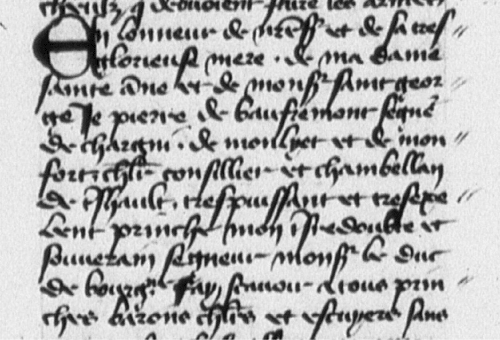





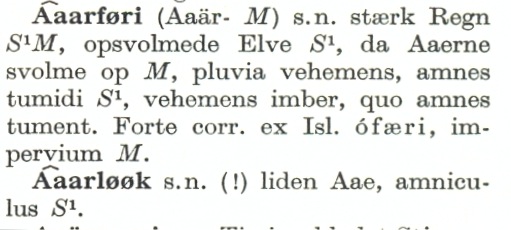

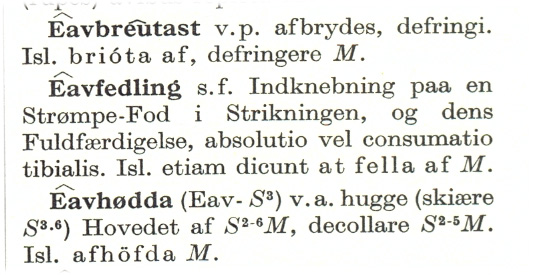


.jpg)
